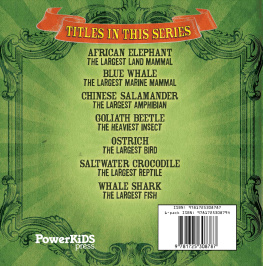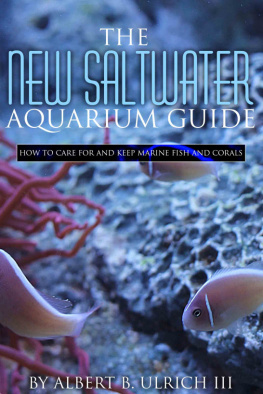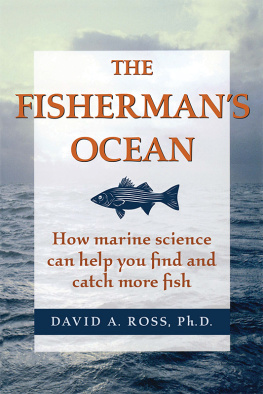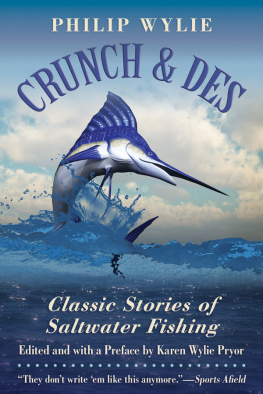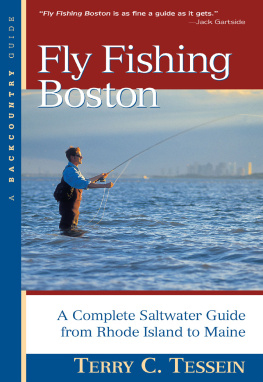FISH FLORIDA
SALT WATER
Boris Arnov

Illustrations by Susan Jyl Feldmann


For my mother and the memory of all our
fishing together.

This edition reviewed
by the author and reprinted
February 1998.
Copyright 1991 by Gulf Publishing Company, Houston, Texas. All rights reserved. Printed in the United States of America. This book, or parts thereof, may not be reproduced in any form without permission of the publisher.
Published by Gulf Publishing
A Member of the Rowman & Littlefield Publishing Group
4501 Forbes Boulevard Suite 200
Lanham, Maryland 20706
Distributed by National Book Network
Library of Congress Cataloging-in-Publication Data
Arnov, Boris.
Fish Florida:saltwater/by Boris Arnov; illustrations by Susan Jyl Feldmann.
p. cm.
Includes bibliographical references and index.
ISBN: 978-0-88415-002-2
1. Saltwater fishingFloridaGuide-books. 2. FloridaDescription and travel1981Guide-books. I. Feldmann, Susan Jyl. II. Title.
SH483.A76 1991
799.1609759dc20 91-4793
CIP
Contents
Mackerels
Marlins
Introduction
This guide tells how, when, and where to catch the saltwater game fishes of Florida. As with any book containing this sort of information, the reader should realize that ten anglers asked the same fishing question will respond with ten different answers. Therefore, be warned! There are other ways, times, and locations not in this guide that catch fish, but what is here has worked very well for many fishermen and women for many years. So start with the information in this guide, but always follow up with advice from a local bait and tackle store for what is important to know at that moment.
Some readers might wonder why certain fishes have been left out. Swordfish, for example, are not given a special chapter because commercial fishermen have nearly wiped them out, and it would mislead a reader to see a section on such a fish. Likewise with spearfish: They are so rare that you may fish a lifetime and never see one. This simply means that the fishes covered in this guide are there for the catching now.
Others might wonder why their favorite fish receives unequal treatment compared with some others. Because some fishes such as the sailfish and spotted seatrout have been fishing targets for a long time, the angling methods are diverse and sophisticated and require more space to describe. The angler should, therefore, read the entire chapter on the fish he or she seeks, because information found for one type of fishing, such as trolling, might be useful for another, such as casting.
Another example of a question a reader might raise is why tripletail fishing around weed in the Atlantic Ocean is not described. The reason is that only the best fishing areas for each speciesnot all areas where the fish is foundhave been included. This means that even though bonefish have been caught in the northeastern part of Florida, the sensible angler would never seek them there instead of the Keys.
Regarding fishing times recommended, the thoughtful fisherman will realize that sailfish, for example, might be caught in the Gulf Stream off Jacksonville in the winter, but he will find no mention of this in the guide, because fishing fifty miles offshore during the stormy months of the year is not the safest procedure. So, for a variety of reasons, only the best times to fish are recommended even though fish can be caught at other times as well.
When a rig or knot is mentioned, the fisherman will find it illustrated and explained in the appendix of the book. The tackle, rigs, and directions about how to prepare baits are methods that have worked for a long time. This does not mean that something different will not catch fishtry it. Also, even though a certain size fly rod, for example, is recommended for sailfish, you must consider whether this is a sensible pursuit, not only whether it is possible or not. Outside of being very expensive in terms of equipment and personnel required, fighting a large fish for a long time on super-light tackle stresses the fish so much that should one wish to release it, survival is doubtful.
When it comes to artificial baits, there are many more on the market than are mentioned in these pages. One can easily accumulate hundreds of dollars worth of casting plugs. Those recommended in the guide are known to catch fish, but there are many others locally used that might work as well or better. Before buying, check with fishermen as well as fishing tackle stores.
Regulations about Florida fishing have often changed over the past few years. The one dependable fact is the necessity of having the new saltwater fishing license. About the only persons exempt are Florida residents who fish from land or bridges and piers, anyone fishing from a guided boat, youngsters under 16, and anglers 65 and older who have a Florida drivers license. Any other regulation found in the guide such as daily bag limits per person or legal sizes should be double-checked as such rules constantly change. During closed seasons, it is legal to catch and release fishes.
Another important point: If it is true that the earth is undergoing a changing weather pattern and that higher temperatures are going to be with us for a while, this will, of course, affect the whens and wheres found in this guide. By the same token, if a particularly severe winter should strike, fish that usually begin to bite in March may delay until April. Again, check locally to determine current conditions.
Finally, for good fishing luck the most important act an angler can perform is to release all fish that will not be eaten and to kill only what he can use immediately. Releasing fish to resume their important role in the food chain, to breed and produce more fish, and to be there for people to catch again is the way to bring good luck.
Boris Arnov
Boca Raton, Florida

1. Area of Apalachicola,
2. Suwannee to Cedar Keys,
3. Tampa Bay,
4. Boca Grande to Sanibel,
5. Florida Bay and Upper Keys,
6. Big Pine Key area,
7. Biscayne Bay area,
8. St. Lucie Inlet area,
9. Jacksonville Beach to Georgia,
For specific areas, see maps on pages .
1

Amberjack; Greater Amberjack
(Seriola dumerili)
An extremely strong and hard-fighting fish that is the largest member of the jack family. Although amberjacks are used as food, there is strong evidence that some may cause ciguatera poisoning, an often fatal illness. Preferred water temperature: 65-80 F. All-tackle record: 155 lb 10 oz.


